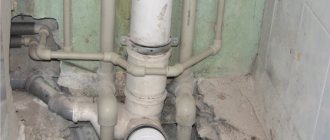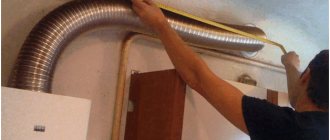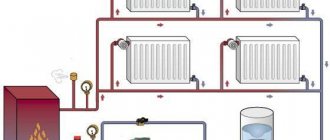Good question, thanks. There are many misconceptions on the Internet on this topic, it will be useful to figure it out.
"What SNiP are we guided by in 2015"? Oddly enough, none, if we are talking about the Russian Federation. In the good old SNiP 2.04.08-87, which was in effect in various editions until 2002, the following was written in the section "Gas supply of residential buildings":
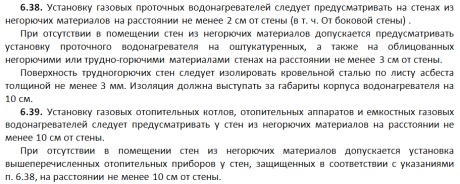
We see that the distance between the wall-mounted gas boiler and the wall is 10 cm, provided that it is made of non-combustible materials. However, SNiP '87 has lost its force and today JV 62.13330.2011 is in effect instead. The new rules do not even mention the distance between the boiler and the wall. There is logic in this, because modern gas heat generators are very different from those that were produced a quarter of a century ago. The body of boilers with a closed combustion chamber heats up significantly less. The only document that today you can definitely rely on is instructions for the installation and operation of a gas boiler. And for each boiler model, the manufacturer indicates individual data, for example:
Everything is clear - we strictly follow the instructions. But occasionally there are wall-mounted gas boilers, in the manuals to which there is generally no indication of the minimum required distance to the wall. In this case, for boilers with a closed combustion chamber, we advise you to focus on the position of the joint venture on the need to ensure convenient maintenance of the heating unit. Ensure free dismantling of the boiler casing. You will have to study the boiler design. On some models, to remove the cover, you need to unscrew a few screws from the side. This means that enough space should be left to the wall to accommodate a screwdriver, about 15 cm. We recommend that boilers for which no distance is indicated should be hung no closer than 10 cm from the wall, even if this is not necessary for maintenance. It will be easier to issue the commissioning, the inspector will not have any questions.
However, it should be borne in mind that individual regions have the right to adopt their own regulations (instructions), partially replacing federal norms. We do not know that today regional norms limit the distance from the boiler to building structures, but we still recommend that you consult the local branch of the MinGAZ just in case.
teploguru.ru
According to SNiP 42-101-2003 6.22 Distances from building structures of premises to household gas stoves and heating gas-using equipment should be provided in accordance with passports or installation instructions of manufacturers. 6.23 In the absence of requirements in the passports or instructions of the manufacturers, gas-using equipment is installed based on the convenience of installation, operation and repair, while it is recommended to provide for the installation of: a gas stove: - near a wall made of fireproof materials at a distance of at least 6 cm from the wall (including side wall). It is allowed to install the slab near walls made of non-combustible and combustible materials, insulated with non-combustible materials (roofing steel on an asbestos sheet with a thickness of at least 3 mm, plaster, etc.), at a distance of at least 7 cm from the walls. Wall insulation is provided from the floor and must protrude from the dimensions of the slab by 10 cm on each side and at least 80 cm from above; wall-mounted gas-using equipment for heating and hot water supply: ... (And hereinafter in the text) G.12 The connection of gas-using equipment to the channels should be provided with connecting pipes made of roofing or galvanized steel with a thickness of at least 1.0 mm, flexible metal corrugated pipes or unified elements supplied with the equipment.
the mmar length of the horizontal sections of the connecting pipe in new buildings should be taken no more than 3 m, in existing buildings - no more than 6 m. The slope of the connecting pipe should be taken at least 0.01 towards the gas equipment. On connecting pipes, it is allowed to provide no more than three turns with a radius of curvature not less than the diameter of the pipe. Below the place where the connecting pipe is connected to the channels, a “pocket” device with a cleaning hatch must be provided, to which free access must be ensured. If necessary, connecting pipes laid through unheated rooms should be thermally insulated. D. 13 It is not allowed to lay connecting pipes from gas-using equipment through living rooms. D. 14 The distance from the connecting pipe to the ceiling or wall from non-combustible materials should be taken at least 5 cm, and from combustible and hardly combustible materials - at least 25 cm. It is allowed to reduce the distance from 25 to 10 cm, provided that combustible and hardly combustible structures are protected by roofing steel on an asbestos sheet with a thickness of at least 3 mm. The thermal insulation should protrude 15 cm beyond the dimensions of the connecting pipe on each side. __
The passports for the stove and the column have their own requirements (screenshots below), each gas equipment has its own. But if you believe the requirements for installing the stove (from the screen for hefest), then you can see the lateral distance from the stove to the column at a height of more than 500 mm and 50 mm to the side or directly above the stove, but at a height of at least 850 mm In the passport of the gas water heater, there is also a requirement for its installation (screen 2) If the requirements are FULFILLED, THEN NORMAL.
Hello Oksana! I am afraid that the same confusion reigns with the norms for the location of gas equipment and gas appliances in the Ukrainian documents as in the Russian ones. So, it can be assumed that if these norms were properly spelled out somewhere, then for sure they would be the same as in the Russian norms. A question similar to yours is being asked by many of those who are going to install gas equipment at home in accordance with all the rules and regulations. But at the same time, they do not want to be guided only by the old SNiPs and the convenience of installation for workers in exchange for the comfortable existence of the owners themselves in their own home. Many installers of equipment refer to the old standards, but even in them nowhere, as far as I understood, the distances between the gas boiler and the gas stove are not specifically spelled out.
They contain only indications that the clear distance between the stove and the DHW column should be at least 10 cm.There are instructions for the distance between the meter and the boiler, the installation distances from the wall to the stove (0.07 m) and to the meter (0 , 02 m). The distance to the opposite wall is 1 m. But what documents determine the distance between the column and the boiler, between the boiler and the boiler, between the stove and the boiler is completely unclear. SNiP 2003 states that unless otherwise specified, the distance is determined by the equipment documentation. However, the trouble is that the documentation for the equipment, as a rule, does not indicate these very distances. The same applies to gas supply projects for an individual house. That is, they also do not indicate the installation dimensions, but only indicate the installation location. This means that the distance between all these devices should be determined using common sense and ease of use.
Articles 6.23 and 6.24. SNiP 2003 states:
6.23 In the absence of requirements in the passports or instructions of the manufacturers, gas-using equipment is installed based on the convenience of installation, operation and repair, while it is recommended to provide for the installation of:
gas stove:
- near a wall made of non-combustible materials at a distance of at least 6 cm from the wall (including the side wall). It is allowed to install the slab near walls made of non-combustible and combustible materials, insulated with non-combustible materials (roofing steel on an asbestos sheet with a thickness of at least 3 mm, plaster, etc.), at a distance of at least 7 cm from the walls. Wall insulation is provided from the floor and must protrude from the dimensions of the slab by 10 cm on each side and at least 80 cm from above;
wall-mounted gas-using equipment for heating and hot water supply:
- on walls made of non-combustible materials at a distance of at least 2 cm from the wall (including from the side wall);
- on walls made of non-combustible and combustible materials, insulated with non-combustible materials (roofing steel on an asbestos sheet with a thickness of at least 3 mm, plaster, etc.), at a distance of at least 3 cm from the wall (including from the side wall).
The insulation should protrude 10 cm and 70 cm from the top of the equipment case. The horizontal distance in the light from the protruding parts of this equipment to the household stove should be taken at least 10 cm.
Equipment for apartment heating should be provided at a distance of at least 10 cm from a wall made of non-combustible materials and from walls made of non-combustible and combustible materials.
It is allowed to install this equipment near walls made of non-combustible and combustible materials without protection at a distance of more than 25 cm from the walls.
When installing the above equipment on a floor with a wooden covering, the latter must be insulated with non-combustible materials, ensuring the fire resistance of the structure is at least 0.75 hours. The floor insulation should protrude 10 cm beyond the dimensions of the equipment case.
6.24 The distance from the protruding parts of gas-using equipment in the places of passage should be at least 1.0 m in the clear.
Sources:
https://forum.abok.ru/index.php?showtopic=53566
https://proekt-gaz.ru/forum/2-826-1#7979
www.domotvetov.ru
If a gas water heater is not provided
In a house where the installation of gas equipment, such as a stove, is allowed, the installation of a column may be prohibited. This limitation applies to houses with more than 11 floors. No regulatory authority will issue permission for the installation of a column in such an apartment, since it is dangerous for residents.
In addition to the number of storeys, redevelopment may become a reason for refusal. Studio apartments are not suitable for the installation of gas equipment, since the appliances must be installed in non-residential areas.
If the kitchen is combined with the living room, then this makes the use of gas appliances illegal. Consider these limitations before redeveloping. The same can be attributed to apartments where the kitchen is absent or shared.
If the house does not fall under these restrictions, then it is necessary to collect a package of documents for registering the device. The procedure is as follows:
- Write a statement to the gas distribution company.
- Get a plan from BTI or Rosreestr.
- Provide an extract from Rosreestr confirming ownership.
- Contact a specialized organization to draw up a project.
- Find certified specialists from an organization that has permission to work on gas.
After that, the specialists will make an insert into the gas pipe, connect the device and put the water heater into operation.
It is highly discouraged to carry out the installation of a gas water heater with your own hands, bypassing the legal order. These actions not only lead to penalties, but also endanger the lives of people.
Mosgaz attacks - in apartment buildings they suddenly decided to change risers
And earlier than it is provided by the plan. Many tenants were not ready for such an initiative of gas workers - no one wants to break expensive built-in kitchens and tiles, and then no one wants to make repairs again. Why such a rush and what should homeowners do now?
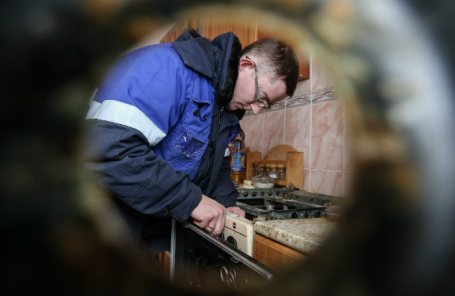

Photo: Alexander Ryumin / TASS
An ordinary house in the Izmailovo district is solid, brick. All common house systems are working normally. But a few days ago, an announcement appeared at the entrances that on October 1, the gas would be turned off, and all residents must be given access to apartments to replace gas risers.
The owners were naturally worried. Many have done a good repair, and do not want anyone to ruin it. In addition, as it turned out, Mosgaz decided to change the pipes ten years ahead of schedule. This is what Nina, a Muscovite, told Business FM:
Nina Muscovite “We made repairs a couple of years ago, and we looked at this gas pipe, it is behind the tiles, behind the kitchen, built-in. Accordingly, in order to provide access to it, all this needs to be broken, disassembled, I can't even imagine how. And when we decided to figure out why, in fact, we need to change this pipe, the announcement indicates that this is being done in accordance with the regional overhaul program, and on the website of this regional program it is written that the replacement of pipes in our house should be done according to the plan. in 2029, if I am not mistaken, that is, not now, but in ten years. "
That is, if before the tiles were changed on the street, now they are forcibly changed at home. The Mosgaz website, referring to the Fund for Major Overhaul of Apartment Buildings, says that "gas pipes may look intact, but this does not mean that they do not require replacement." "Gas is an aggressive medium, an enclosed space enhances its effect."
Therefore, as part of a major overhaul, a complete replacement of the gas supply system of the house is carried out, up to the replacement of flexible connections to stoves and gas water heaters. Anatoly Kabanov, chairman of the supervisory board of the Russian Union of Engineers, former vice president for logistics at Rosneft, frankly does not understand why it was necessary to change the gas risers.
Anatoly Kabanov Chairman of the Supervisory Board of the Russian Union of Engineers “In our practice, gas diversions have been standing for up to a hundred years. This is how gas heating appeared, well, not a hundred years, but 80 years, figuratively speaking, and the replacement of major pipes around the house is not carried out anywhere. That's bullshit. In principle, stupidity, in the first place. Secondly, it is not done overnight. This should have warned 20 years in advance that, you know, when buying a kitchen, you will have a replacement planned in 2030. Did they have an explosion? What happened? It's good if the kitchen costs a thousand rubles or two thousand rubles somewhere in an old apartment. But there are kitchens that cost a hundred thousand dollars, and what do they need to do? Therefore, this is nonsense, from my point of view. I don't know why this is done. Who is where the percentage is sitting? This cannot be conditioned by any common sense. "
But if no common sense can explain this, then why are the pipes still being changed? And ten years earlier than it should be, according to the regional overhaul program? There is only one answer: it is necessary to use the money accumulated in the Capital Repair Fund, says Konstantin Krokhin, chairman of the Union of Moscow Housing Organizations, member of the Housing and Utilities Committee of the Chamber of Commerce and Industry.
Konstantin Krokhin Chairman of the Union of Housing Organizations of Moscow, member of the Housing and Utilities Committee of the Chamber of Commerce and Industry “Only those houses that were transferred to individual special accounts are about 12% of houses in Moscow, and all the rest were silent and ended up in a common boiler.So, these common boilers are operated by the so-called regional operators. They own the money, they manage, they hire contractors, and in this case it can be assumed that, from the point of view of the regional operator, it was profitable, or there was an agreement with Mosgaz to spend this money earlier. They accumulate tens, hundreds of billions of rubles a year, and any official wants the budget to be used. And in this case, most likely, from these considerations, they are looking for houses where they could do it early. "
Perhaps the main question is - what should the tenants do in this case? In principle, they have the right to change the overhaul program. In particular, refuse to replace gas risers. But for this it is necessary to collect at least two-thirds of the votes at the general meeting of tenants, explains Krokhin:
“If the initiative group in the house decided to somehow correct the overhaul program or change the scope of work, refuse something or add something, it is necessary to hold a general meeting of the owners of all premises with a two-thirds vote. Accordingly, the answer to the question of how to fight in order to cancel unnecessary overhaul or unnecessary work - it is necessary to formalize this decision, the will of the residents in the decision of the meeting. "
It is extremely difficult to gather all tenants at the same time in one place. And even more so, it is impossible to do this in a couple of days. Therefore, there is only one way out - everyone should agree and not let anyone into the apartments until the meeting takes place. Moreover, there is a foundation - nothing needs to be changed for another ten years. This is an extreme measure, but also legal.
If there is no accident and everything is working properly, then you can not start up. According to the Constitution, our home is inviolable. Business FM sent a request to Mosgaz with a request to explain the need for early replacement of risers, but at the time of publication of the article, no prompt comment could be received.
Add BFM.ru to your news sources?
If the column has already been installed
When changing the water heater in the event of a malfunction, the passport of the device must also be replaced. If you independently mount the gas water heater, then in the passport of the new device there will be no marks on commissioning and inspections.
After receiving the comment, it will be necessary to connect the column again, inviting certified specialists.
Their duties include inspection of ventilation ducts. In older homes, they can be clogged with rubbish. It is dangerous to operate clogged ventilation ducts. This can cause fatal carbon monoxide poisoning. If the decision to independently install the water heater is made, then first of all, you need to check the ventilation.
Requirements for a room with gas equipment
The place where the gas water heater will be installed must have a cubic capacity of more than 7.5 m3. The height in the room should not be lower than 2.0 meters. This height, according to the standards, is sufficient for a gas water heater. The room must be glazed.
The window cannot be deaf, it must be possible to ventilate in the event of a leak. The total glazing area (without a frame) is determined by the formula:
C = O * 0.03
Where:
C - glazing area. О is the volume of air in the room.
The window must allow air to pass through for emergency ventilation. An ordinary kitchen fully meets these requirements, if it is equipped with a door. If there is no door in the kitchen, then it must be installed.
Installation of a gas analyzer in the room is desirable. It will help detect gas leaks. This device is optional, but helps to monitor the operation of gas appliances. It reacts to an excess of propane in the air, and then warns about this with a signal.
Replacement rates
First, it is worth finding out under what circumstances the gas pipes are used in the kitchen. The use of blue fuel in such a room most often means the installation of a stove. It's time to familiarize yourself with the terms of use. So, remember the main postulates:
- gas stoves are allowed to be installed in kitchens with a height of 2.2 meters (if the ceiling in the room is sloping, then to install the stove, you should choose a place where it reaches the established norm);
- the kitchen should be equipped with a window with a vent, so that during the day you can carry out repair work without artificial lighting, airing the room (the presence of a functioning ventilation duct is welcomed);
- between the slab and the opposite wall, there must certainly be a passage with a width of 1 meter;
- the ceiling and walls made of materials prone to burning, according to the standards, must certainly be covered with plaster;
- the stove is allowed to be used in kitchens, separated from the corridor by a reliable wall / partition and door;
- the distribution of gas pipes in the kitchen should be made so that the distance between the walls and the stove is from 7 centimeters;
- branching to the plate is allowed only at the level of the connecting pipe;
- the shut-off valve should be installed at a level of 1.5 meters from the floor and at a distance of 20 centimeters from the side of the stove;
- for mounting the plate, it is permissible to use a special (heat-resistant - from 120 degrees) flexible sleeve and do not forget to change it, based on the recommendations specified in the product passport.
Read next: Copper pipes for heating and fittings
The norms of handling are indicated mainly with already installed pipes and devices connected to them. If you plan to change, transfer, or even cut the gas pipe in the kitchen, then go ahead.
This is how you can hide a fragment of the network if it bothers you - without any transfer
According to the norms for replacing risers in an apartment building, their replacement must be carried out in two cases:
- The end of the service life of the metal structure.
- Complete renovation of the bathroom of the apartment.
Living conditions provide for 2 modes of pipe replacement:
- planned - when the replacement date has come;
- emergency - when there was a violation of the integrity of the pipe and a leak was formed.
IMPORTANT
The warranty period for pipes in apartment buildings is at least 25 years. Even if after this period the structure is complete without leaks, the riser still needs to be replaced.
Increasingly, cast iron pipes are being replaced with polypropylene ones. This is due to a number of advantages of the material:
- profitability;
- ease;
- strength;
- safety for the environment;
- resistance to deformation from thermal effects;
- resistance to corrosion and other influences;
- sliding structure of the inner walls, which prevents the formation of plaque;
- long service life: from 50 to 100 years.
Ventilation and chimney requirements
A ventilation hole is required to create air circulation in the room. It should not be clogged, air should pass through it calmly. If you neglect this rule, then in the event of a gas leak, apartment residents will be poisoned with serious consequences.
The risk of detonation of household gas will increase significantly if it is not removed naturally, since a leak can occur at night when a person is not able to detect it.
For the normal functioning of the gas water heater, an additional chimney must be installed. It can be brought out into the general building system or directly to the street. When constructing a chimney, it is necessary to take into account that it cannot have more than two bends at an angle of 90 degrees. The total length of the chimney must not exceed three meters. Three options for the location of the chimney are allowed.
The pipe must have a vertical section at the point of connection to the water heater.The length of the vertical section must be greater than or equal to 50 cm. The length of the horizontal section of the pipe must not exceed two meters. It is allowed to make a chimney from a flexible corrugated pipe, but it is necessary to exclude its sagging, which can block the removal of combustion products.
If the column device does not imply a chimney, then you cannot limit yourself to the ventilation hole in the wall. It is necessary to install a full-fledged hood, but even in this case, the gas service will have questions about such a carbon monoxide removal system.
MOSGAZ enters overhaul
Very soon, MOSGAZ JSC will begin work that is important for Moscow and Muscovites - participation in the overhaul of residential buildings in the capital. MOSGAZ has vast experience in servicing and repairing indoor gas equipment, is able to ensure the safe use of gas in everyday life, and it is safety issues that dictate today the need for reconstruction and monitoring of the technical condition of indoor gas equipment and household gas appliances in houses included in the list of major repairs. Hasan Gasangadzhiev, General Director of MOSGAZ JSC, spoke about how this work will be carried out and what its prospects are.
— Hasan Gizbullagovich, what is the reason for MOSGAZ's participation in capital repairs of residential buildings in the capital?
- In short, this is dictated by the need to ensure the safety of Muscovites. Indeed, for a long time no one was involved in the reconstruction of gas systems in the houses that fell into the overhaul program, and here we diagnose the deterioration of equipment and devices. This problem must be solved within the city, comprehensively and systematically in order to ensure the guaranteed safety of people living in the reconstructed houses. Therefore, we have made a decision to participate in this work under the auspices of the Capital Repair Fund of the capital, and when the competitive procedures conducted by the FCR are completed, we will begin to implement complex solutions for the reconstruction of gas systems in residential buildings undergoing major repairs. Our position was also supported by the city authorities.
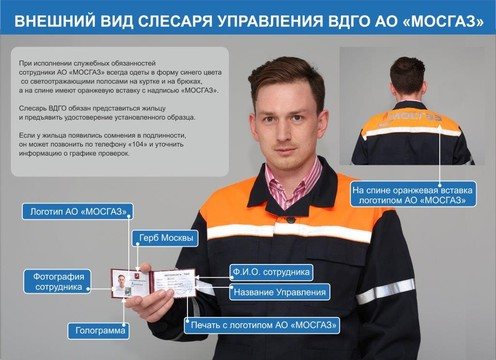

— What specific solutions are we talking about?
Firstly, it is a complete reconstruction of the entire gas system of houses. At the same time, we will try to minimize the possible inconveniences that such work may cause to residents. Secondly, during the reconstruction process, we will use elements that guarantee a high level of reliability, and therefore a high level of safety. These are modern shut-off devices, valves and other equipment that allow safe operation of the system. For example, we will completely abandon threaded connections, we will use a flexible hose that has a high degree of protection against breakdowns and in contact with electrically conductive cables. Shut-off valves with additional valves will be used to ensure the closure of the shut-off device, for example, in the event of a fire, or in the event of a break in the supply line. The third aspect concerns work no longer within the framework of a major overhaul, this work will be carried out in parallel. I mean the simultaneous revision of gas appliances in apartments. The owner of the apartment is responsible for the technical condition of these devices, and if we find any problems, we will offer the owners or tenants of the apartments either to repair or change the gas appliance. Thus, in the houses where the reconstruction of the gas system is planned, the whole complex of measures will be carried out to ensure the safety of the entire gas distribution system. Of course, in this case, the owners will receive guarantees in terms of the operation of household gas appliances. This work will be carried out by our divisions, without the involvement of contractors, and MOSGAZ is responsible for the quality.
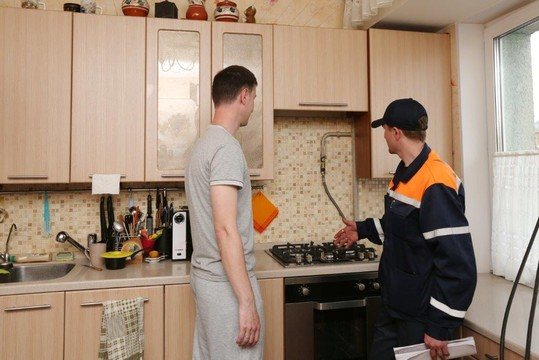

— Probably, this provides for closer work with the authorities and with residents of houses where major repairs and reconstruction of gas systems will take place?
- Yes, and we are thinking about it today, because without interaction with prefectures, councils, housekeepers and residents, such work cannot be done efficiently and on time. We will hold meetings with residents, with the participation of housekeepers and representatives of government agencies, in order to ensure coordination of all types of work and the timing of their execution in houses determined by the address list of major repairs. Of course, there will be some adjustment in terms of time, and apparently, this may be due to the difficult access to the apartments. Therefore, we ask residents to provide our employees with access to the gas systems and appliances located in the apartments. The residents themselves need this, because they are not in any way interested in extending the terms of major repairs, which are closely tied to the very tough terms of reconstruction of gas systems. At the end of the day, this is a matter for the safety of residents, and I hope they will show understanding and will not interfere with our work. Otherwise, we will be forced to simply turn off the gas supply to the house.
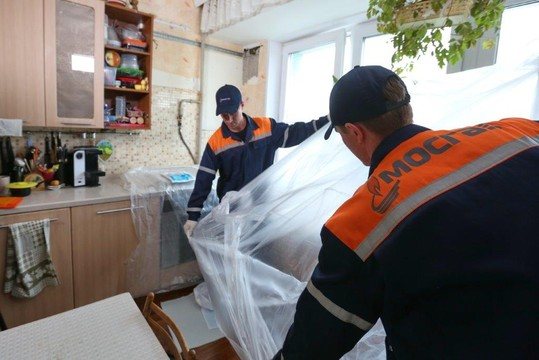

— And yet, what threatens those apartment owners who refuse to let in the MOSGAZ employees involved in the reconstruction of the gas system of the house?
- As I said, in this case, in accordance with the law, a fine will be issued. The law adopted in 2020 contains an exhaustive list of requirements that, in such cases, are imposed on the owners of residential premises. The owner is obliged to maintain the gas system in proper order and ensure the admission of qualified personnel for repair work, diagnostics or overhaul. After all, if the owner does not provide access, the gas distribution company has the full legal right to turn off the gas supply to both the apartment and the entire house. Yes, this is a harsh measure, but it is dictated solely by security considerations.
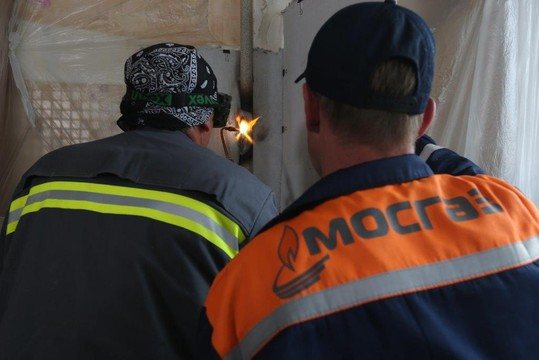

— And what if the owners have just made a renovation and do not want the repairmen to “ruin”, for example, their brand new kitchen?
- Let's start with the fact that we will inform the residents and elders in the house about the reconstruction of gas systems in advance, at least three days in advance. After all, residents must be prepared for the fact that at a certain time they must be at home. At the general meeting of owners, a specific day is chosen, and on this day our specialists will come to the house. To save people time and not create unnecessary inconvenience, we can work by access. How long will it take? Judge for yourself. Replacing the gas riser will take four hours. This means that the resident must be at home for half of the work shift. Agree, this is not so much. As for the "smacked" kitchen, we will inform the residents that they must remove all obstacles to the production of work. For example, ensure the dismantling of all kitchen furniture in the work area, cover the furniture or refrigerator with film or cloth. In addition, the gas pipeline, according to the norms, cannot be closed by anything - a false wall or furniture, it must be accessible for inspection and repair. Of course, our employees do not come to the apartments to "raskurochivanie" furniture. All our staff are well equipped, people have shoe covers for entering the apartment, the necessary means of protecting furniture from possible damage during work. But if, nevertheless, there is damage to the furniture, or the refrigerator, we are ready to sort it out, and if our employees are really to blame, we will compensate for the cost of the damaged property.


— You said that MOSGAZ guarantees the quality of its work. What exactly defines such guarantees?
- This is determined by the consumer properties of materials and equipment used in the reconstruction.We give a guarantee for all our work, the consumer can be sure that it is carried out in compliance with the rules and regulations, and if the system is used correctly, there will be no problems with it. Simply put, we guarantee that after our work there will be no gas leaks, and it is only about the correct use of the gas stove or column.


— Who is financing the renovation of gas systems in residential buildings?
- This work is paid for by the Capital Repair Fund. If residents have a need to repair or replace, say, an old gas stove, we will provide this service on a reimbursable basis and with exactly the same provision of security guarantees. I would even advise Muscovites to use this service in order to solve all the "gas" issues in their apartment at once. Of course, someone can say, they say, everything is in order with my gas appliances and, in general, with the entire gas system in the apartment, and why, then, will I change or reconstruct something here? I will answer: if the gas pipeline in the house has exhausted its resource, determined by technical standards, and has been operating for more than a dozen years, then we can already talk about wear and tear, which means a decrease in the level of safety. That is why we are now undertaking the reconstruction of all gas systems during major repairs in residential buildings.
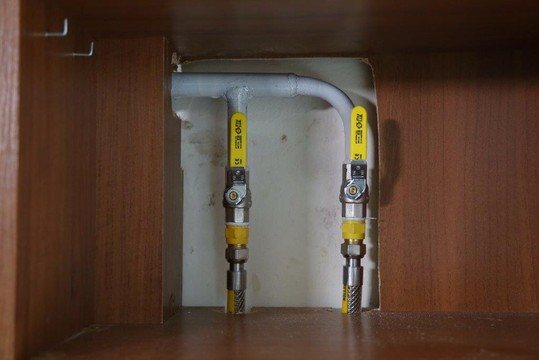

— On what basis is the house included in the list of reconstruction of gas systems?
- Based on the technical inspection carried out annually by MOSGAZ. He determines the need for this work. We look at the service life of the gas pipeline, the number of emergencies in the house, the condition of the threaded connections - these are the main criteria. I am often asked what to do if the house is not included in the list of major repairs, and the gas systems there are worn out? In this case, if we are talking about a comprehensive replacement of the gas pipeline, you need to contact the Fund for Overhaul and ask to include the house in the overhaul program.
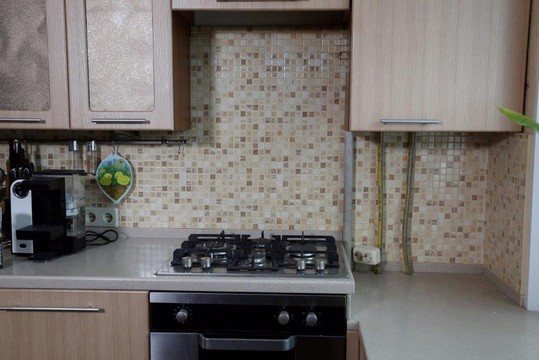

— You mentioned the quality of the threaded connections. Is it so important?
- When it comes to a gas pipeline or a gas appliance, this is vital. When old houses were being built, the entire pipeline system was assembled on threads, using all kinds of couplings and squeegees. Woven materials were used as seals in such systems: flax, threads, etc. Over the decades of operation, these seals wear out, leaks appear in these places. Therefore, a decision is made to dismantle the entire old system, we are shifting the system from a new pipe, which will be completely welded. The reason is simple: welding is safer and more efficient than threading. It is a very strong bond that does not deteriorate over time.
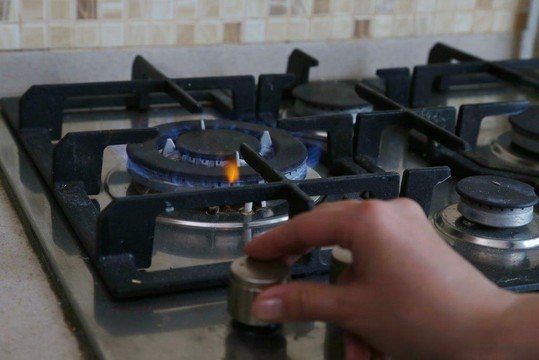

— For what period is the program of the "gas" part of the major overhaul calculated, and how many houses are included in it?
- This is a fairly lengthy program, for each year plans are drawn up, determined by the customer, that is, the Capital Repair Fund, which determines both the number of tender procedures and the accepted lists of houses that fall into the capital repair program. We can talk about about 600 addresses in 2020 under this program. I think that over time the program will gain momentum, and this will affect the volume of work.
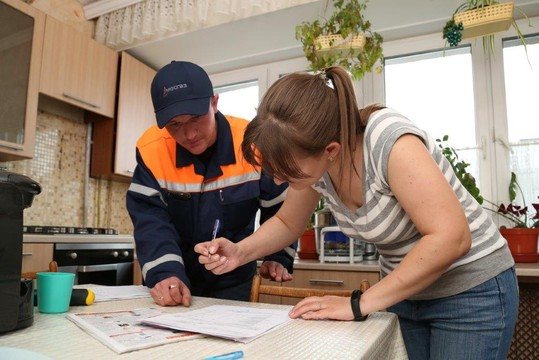

— How do Muscovites living in overhauled houses find out that MOSGAZ employees will soon come to them?
- After the end of the competitive procedures - and this may be at the end of June - we will be able to start working. To begin with, a complete list of addresses will be posted on the MOSGAZ website where the gas supply system will be repaired and reconstructed. Then, after meetings with representatives of territorial authorities, housekeepers and residents, we will draw up a schedule for the work.These schedules will form the basis of a unified schedule, which we will also post on the Company's website, where the specific deadlines for the execution of work at specific addresses will be reflected. Relatively speaking, all work in a house with a hundred apartments will take three, maximum four days. Yes, this will create some discomfort for residents, but I think Muscovites know that this work is being done for their own safety, and they will treat temporary inconveniences with understanding.
Chimney device in an apartment with wooden walls
In wooden houses, the use of a water heater on blue fuel is allowed, but the fire safety standards for installing a gas boiler must be observed. The chimney cannot come into contact with wood; non-combustible material must be placed between them. Basalt or mineral wool can be used as thermal insulation. The use of heat-resistant polyurethane foam is allowed.
This is necessary to prevent fire in case of strong heating of the chimney. As a rule, chimneys are not provided in old wooden houses, or they are designed for stove heating. Installation of gas equipment is prohibited in emergency houses.
Gas pipe classification
Different pipes are used for systems of different classes. State norms for them are as follows:
- for gas pipelines with low or medium pressure, electric-welded longitudinal seam pipes of general purpose are used;
- for systems with high permissible longitudinal electric-welded and seamless hot-rolled.
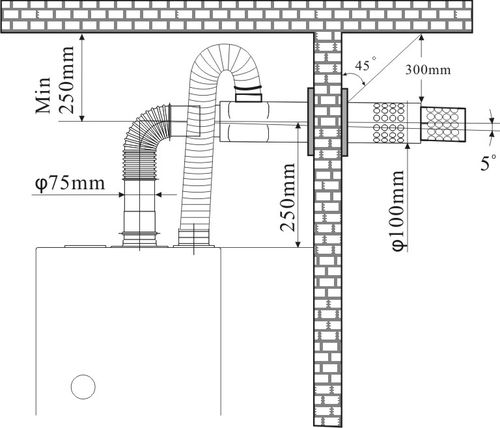

The choice of material is also influenced by the installation method.
- For underground utilities, both steel and polyethylene products are the norm.
- For overhead, only steel is allowed.
- The house, both private and multi-storey, uses steel and copper pipes. The connection is supposed to be welded. Flanged or threaded is allowed only in the areas of installation of valves and devices. Copper piping allows connection to press fittings.
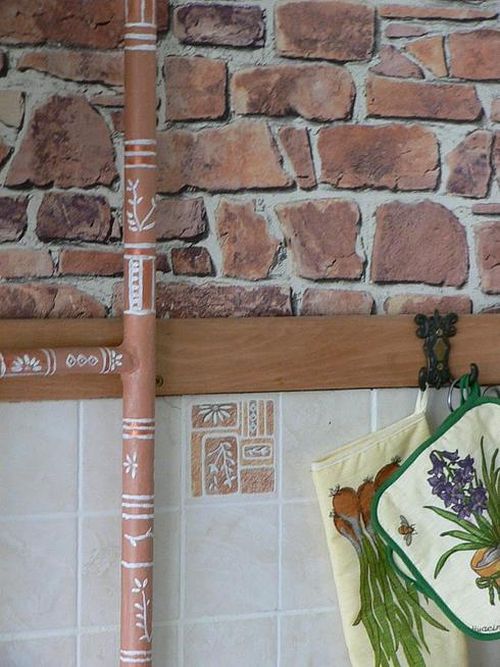

The photo shows an example.
Dimensional parameters
GOST allows two types of gas pipes in an apartment. The products belong to general-purpose products, since complete gas tightness and mechanical strength are important here, while pressure resistance is insignificant: 0.05 kgf / cm2 is a modest value.
- The parameters of the steel pipeline are as follows.
- The outer diameter of the steel pipe can range from 21.3mm to 42.3mm.
- The nominal bore ranges from 15 to 32 mm.
- The choice is made depending on the scope of delivery: a gas appliance in an apartment or a riser in a house.
- The diameter of the copper pipe is selected in the same way. The advantage of this option is a simpler installation - with press fittings, anti-corrosion material and an attractive appearance. According to the norm, copper products must comply with GOST R 50838-95, other materials are not allowed.
- The diameter of gas pipes for pipelines with pressures from 3 to 6 kgf / cm2 varies in a much wider range - from 30 to 426 mm. In this case, the wall thickness depends on the diameter: from 3 mm for a small size, up to 12 mm for a diameter over 300 mm.
- When constructing an underground gas pipeline, GOST allows the use of low-pressure polyethylene gas pipes. The material is designed for pressure up to 6 kgf / cm2. The diameter of the plastic pipe varies from 20 to 225 mm. The photo shows a gas pipeline from HDPE.
The pipeline is laid into the trench only in ready-made sections, so the installation of the pipeline is an expensive and time-consuming job. When cornering, the steel gas ducts are cut and connected through special elements. Polyethylene allow bends: for systems with pressures from 3 to 6 kgf / cm2 up to 25 outer diameters, with a value of up to 0.05 kgf / cm2 - up to 3. Combined with greater ease and high corrosion resistance, this makes the option with a plastic pipeline more and more attractive ...
Column layout rules
The water heater cannot be located on the load-bearing wall of the building. This is expressly prohibited by the requirements for the installation of gas water heaters. In the event of an explosion, this can result in damage to the building or its partial destruction. To clarify the possibility of installing the device, you need to take information from the cadastral passport of the apartment and the general plan of the house. This information can be clarified by calling specialists.
Space requirements are imposed from the column itself to the opposite wall. The distance should not be less than one meter. This is necessary for free access to the device for maintenance and inspection. Also, you cannot install pipes for supplying gas to walls.
This makes it difficult to inspect communications and find gas leaks in the apartment. If this violation is detected, an order will be issued to eliminate it and information will be explained on how to correctly install the gas water heater and where to go.
The column must be at a distance of more than 10 cm from the wall. It is not allowed to install a gas water heater on a wooden wall without preliminary preparation. At the installation site, a steel plate should be installed, equal or larger in area to the rear wall of the device.
Installation of a column above a gas stove is not allowed. These devices must be at least 1 meter apart. Also, you can not use the hood for a gas stove as a removal of combustion products. You cannot use one chimney for an exhaust hood and a gas water heater. This is expressly prohibited by safety regulations.
What are the requirements for the installation of gas boilers
I want to hang a boiler in the kitchen. The designer tells me - it is not allowed there, and there it is not allowed ... He motivates with some dimensions, especially with a distance from the window - 0.5 meters. Where you can see all the requirements for the installation of gas equipment (stove, boiler). Interested in dimensions, distance directly between devices, distance from windows, from openings, etc.
The main normative act, according to which the installation of thermal gas units is carried out - DBN V.2.5-20-2001, section "Internal gas supply devices", which includes "Gas supply of residential buildings". Based on this document, it is permissible to install gas boilers in the premises of residential buildings. The thermal power of the equipment installed in the kitchen should not exceed 30 kW. The minimum volume of a room in which a gas heater with a capacity of up to 30 kW can be placed is 7.5 cubic meters.
Gas appliance for heating can be installed in a wall-mounted kitchen cabinet
It's important to know! 2 types of gas units, for example, two heating boilers, cannot be installed in the same room.
Mounting distances
Installation of heating equipment is carried out in accordance with the manufacturer's requirements and taking into account regulatory documents. When installing the heating unit, it is imperative to provide for fire safety rules, ease of installation, service and repair. Based on the norms, the installation of equipment on gas relative to the side walls is carried out taking into account their flammability index:
- non-flammable and hardly flammable protected materials - a distance of at least 10 cm;
- flammable and hardly flammable surfaces without protection - a distance of at least 25 cm.
The distance from the plane on which the boiler is hung should not be less than 3 cm. Along the front of the heating boiler (taking into account all protruding elements), the distance in the light and on the sides in the passage points should be at least 1 meter.
Protection of hardly combustible and combustible walls is carried out with a layer of plaster or a sheet of asbestos 3 mm thick with a front covering of sheet steel. If the heater is installed on a wooden floor, the floor protection must protrude 10 cm beyond the outer circuit of the gas system.
As for the norms for installing a gas stove, the height of the kitchen should not be less than 2.2 meters, and the presence of: exhaust ventilation, natural light, a window section for ventilation is also required. Placing the slab must be done so that the distance to the walls (back and side) is at least 6-7 cm.
It's important to know! Please note that the manufacturer often indicates its requirements for the installation of equipment - they should be looked for in the instructions for installation and operation or in the product passport.
Standards for the removal of combustion products from the boiler
The exhaust of combustion products from the heater can be carried out through the outer wall of the kitchen according to the manufacturer's scheme. When exhaust gases are discharged into a central ventilation system or chimney, the volume of the kitchen space should be 6 cubic meters greater than the standard. Also, when removing substances formed during combustion from a gas boiler through a chimney, it is imperative to provide one of three options that ensure the flow of air into the kitchen:
- a grate at the bottom of the door leading to an adjoining room;
- the gap between the floor and the door;
- grate in the outer wall.
The exhaust gases from the boiler system can be discharged through the outer wall of the kitchen
If the heating boiler has a sealed internal combustion chamber, the above three options for arranging the kitchen to ensure air circulation can be neglected.
It's important to know! When removing volatile combustion substances from the unit through the ventilation shaft, it is recommended to use apartment alarms to monitor the concentration of toxic air masses in the room.
strmnt.com
Specificity of gas supply installation
The pipes in the apartment are the property of its owner, but unauthorized changes in the gas supply system cannot be made. For any changes, you must obtain permission from the gas service, otherwise a fine will be issued.
If the gas water heater has already been installed in this place, then this will not cause significant changes to the project. It is enough to turn off the gas valve on the pipe and replace it. If the water heater is installed for the first time, then you will need to do the wiring.
When self-installing pipes, the following rules must be observed:
- Shut off the gas before starting work.
- Carry out work with an open window.
- Remove debris from pipes that have arisen during installation.
- Do not run pipes through door and window openings.
- Do not use a ventilation shaft for piping.
- Do not install the gas line in the wall.
- Do not use flexible hoses longer than 3 meters.
- Paint metal pipes.
Particular attention should be paid to the sealing of the gas pipeline connecting elements. To do this, you need to use a sealant and sealant. After completing the wiring, you can start installing the device.
Preparatory stage
As they say, a successful plan is already half the battle. If you want to move the gas pipe, you need to determine - to what place, or even better, think over a couple of options (if one of them turns out to be impracticable, then the masters will immediately consider the other). You need to record your notes, or even better, draw them so that it is more convenient to explain what you want. Meanwhile, the flight of your imagination will be somewhat limited. Get acquainted with the mandatory standards that the gas pipeline must comply with.
This is important to know! Before digesting a gas pipe in an apartment, think if it may be enough for you to lengthen the network with a flexible hose with an allowable length of up to 3 meters.
As a rule, the need to transfer a pipe arises after buying an apartment - before renovation
Gas supply system requirements
So, the transfer of a gas pipe in an apartment is possible only if the following conditions are met:
- there must be unimpeded access to the network (in any fragment);
- there should not be windows, doors in the way of communications;
- it is prohibited to conduct the system through ventilation;
- the minimum distance of pipes from the floor is 2.2 m;
- the intersection of network fragments with walls must be made in a special way (pipes should be packed in construction cases protruding 3 cm beyond the plaster);
- the elements must be fastened firmly - with rigid connections;
- it is not permissible to hide the system behind the casing (only if the structure is easily removable).
This is important to know! Even if you are a jack of all trades, you know how to move a gas pipe in an apartment and have done such work more than once, you still need permission from the appropriate authority, because the gas service must be aware of what changes have occurred, whether it will lead to an accident or tragic consequences. And it doesn't matter where the gas pipe is transferred. If you disobey, you will have to pay a fine equal to 5-10 minimum wages. In addition, you will have to return the previous communications layout at your own expense.
Layout of the network through the walls
Getting permission
As you understand, the redevelopment of gas pipes in the apartment is approved by the appropriate authority. In addition, the employees of the same office will turn the plan approved by you into reality. Consider a step-by-step guide of actions:
- Collection and preparation of documents (passport, documents for the ownership of an apartment, plan / description of redevelopment, etc.).
- Visit to the gas service.
- Consultation of a specialist (you will be told which package of documents should be provided / shown, and will also be handed a sample application).
- Making an application, in which you should write your address and outline the request itself (based on these data, a decision will be made whether it is possible to transfer the gas pipe in the apartment).
- Waiting for a representative of the gas service, who will issue a "verdict" - is it realistic to fulfill your request or not, he may also offer his own solution to the problem.
- Acquaintance with the estimate / plan of the transfer, which the master will make for you. Document approval.
- Payment for services. You will need to compensate for the work of the team working both on budgeting and on its practical implementation. It is difficult to say in advance how much it costs to move the gas pipe in the kitchen, since a lot depends on the volume and complexity of the work, meanwhile you have no choice but to decide on an "underground" redevelopment and its own implementation (but remember about the fine).
- Provision of conditions and premises for carrying out the approved block of actions.
- Control check of the quality of the work performed (carefully inspect and check the strength of the connection point, make sure that there is no blue fuel leakage in the system, covering the surface of the mounts with soapy foam).
- Signing of the acceptance certificate, and do not forget to keep one of the copies for yourself, because it is a guarantee that in case of failure, the mistakes of the masters will redo everything for you free of charge.
The connection must be tight
Checking the tightness of the gas channels
After installing the water heater, it is necessary to check the gas pipes for leaks. If there is a gas analyzer, this greatly simplifies the procedure and improves the quality of the test. If this device is absent, then you can use the old method.
To do this, you need regular soap, a jar and a brush. Soap dissolves in the jar to form a liquid emulsion. Then, using a brush, the emulsion is sequentially applied to the pipe joints. As you apply, you should monitor the appearance of bubbles on the treated areas. If they appear, the leak must be repaired.
Under no circumstances should a gas leak be checked with a fire. This is dangerous and could cause an explosion. You shouldn't risk your life and the lives of your neighbors.
Why keep the distance between the outlet and the gas pipe
Typically, an AC outlet of 220 volts for powering electrical appliances and gas pipes is located in the immediate vicinity of the kitchen or at the point where the gas heating boiler is connected to an individual house. A typical fault in an electrical outlet is the loosening of the fastening screws on the terminal block during operation, as a result of which the wire moves away from the terminal plate a short distance and a spark can appear between them.
If at this time a long-term gas leak occurs from the gas pipeline for some reason, then when it reaches a certain concentration after entering the sparking zone, an explosion may occur. A similar danger is posed by sparking not only in the outlet, but also in the rupture of electrical wires, connected electrical devices, shields placed next to the gas pipe.
It is clear that the closer the laying of electrical lines to gas pipelines, the greater the risk of explosion is a combination of such unfavorable factors as sparking and gas leakage.
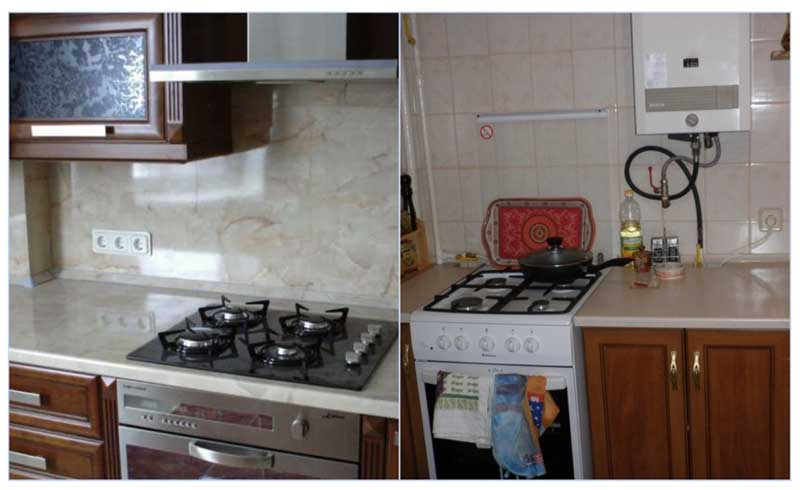

Fig. 2 An example of the location of a kitchen outlet, taking into account a safe distance from gas pipes
Analysis of the most common installation errors
The most common mistake is the installation of a gas water heater in the bathroom. There is usually no window in this room. It is especially dangerous to install speakers without a chimney. There are models of water heaters in which carbon monoxide comes out through the holes, and it is removed from the room through a ventilation hole in the wall.
The second most common mistake is the desire to hide the device so that it does not visually knock out of the interior. Often the gas water heater is installed in a cabinet. This leads to disruption of the correct functioning of the gas column.
The third mistake, which is often encountered, is the confused connection of the gas pipe in the column. This leads to the ingress of water into the gas pipeline. The liquid enters there through the gas column and then moves down the pipes. So water gets into the gas equipment of the neighbors from below, completely disabling it.
Gas mountain workers cannot be prevented from performing the shutdown. In case of refusal, a police squad will be called, as people's lives are in danger.
We crash into the central pipeline
An injection into a gas pipeline under pressure is not carried out by residents, multi-storey buildings are equipped with the necessary elements even before commissioning. But those who have built a private house according to an individual layout are faced with this problem and for them such information will be just in place.
We prepare the necessary documents
To obtain permission to connect to a gas pipeline or rework the wiring in an apartment, you will need the following list of documents:
- Technical documents for the apartment, original;
- Diagram of the piece of land on which the house stands, shown in the gas service. The diagram shows the pipeline for gas, water, sewage and heating;
- Attach documentation for the equipment you intend to install and operate. This is a quality certificate, a maintenance contract and admission to operation in a residential area;
- Chimney inspection report.
The set of documents for replacing gas pipes in an apartment is not very large
We get permission from the service
In order for the tie-in into the low-pressure gas pipeline to pass normally, first obtain a permit for this in Gorgaz. There, find out how the main gas pipeline runs and what methods they recommend. Each element of the purchased gas equipment is agreed with the designer, who then draws up a project for the gasification of the premises. After that, the economic department calculates the approximate cost of the work and draws up an estimate. Study the contract carefully before signing - check each item so that the contractor equips the house with gas of high quality.
If you need to crash into a gas pipe, but there is neither time nor desire to engage in projects, then a technical service engineer, based on the provided scheme, will draw up a plan to order, select suitable equipment for heating and gasification of the constructed premises.
The developed project is then coordinated with you and with the executive company that will install the equipment.
When the plan is prepared, an agreement is drawn up for in a private house and for monitoring the execution of work by the gas city service. No matter how ridiculous it may sound, an important rule of good gasification is a careful reading of the drawn up contract and other documentation that is issued by the gas service. After each document is assembled, a tie-in into the gas pipe under pressure begins, and at the end of this moment, the technical documentation is signed.
The completed tie-in into the gas pipeline is accepted by a special commission, which includes members from the city gas service and from the executive company. When the price for replacing gas pipes in an apartment is paid and the system is running, gas workers hang seals on the gas equipment so that only they have access to the inside.
WATCH THE VIDEO
Liability for unauthorized installation
If the insert into the pipe for connecting the column is made bypassing the metering device, then such an act falls under Art. 7.19 of the AK RF. For this, administrative liability is provided in the form of penalties. For individuals, fines range from one and a half to two thousand rubles. This is the smallest possible measure for those illegally connected to the gas system.
In addition to the administrative code, unauthorized installation and installation of gas equipment falls under the scope of Federal Law No. 69 "On Fire Safety". According to the text of the document, the owner of the property bears administrative or criminal liability depending on the severity of the consequences.
If the actions bring property damage to third parties, then the owner will be obliged to compensate it in full. In addition, a fine of 80,000 rubles may be imposed for a violation. If significant harm was caused to the health of neighbors, then the owner can be arrested and imprisoned for up to two years.
Gas meter replacement procedure
Upon completion of the installation of the pipe of the MKD water riser, an "Act of work performed" is compiled, in which the following will be spelled out:
- the date of the contract;
- serial number of the contract, according to which the act is issued;
- the amount of work performed and all the actions taken;
- the cost of work;
- the name of the person performing the repair work;
- the signatures of the contractor and the customer.
This document is made in 2 copies, one of which is given to the contractor, and the second remains with the customer. The contractor is the organization dealing with the replacement of the emergency element. The customer can be the Criminal Code (then one copy remains with them and the owner of the apartment is not handed over) or directly the owner of the property.
Even if the contract is drawn up by a representative of the Criminal Code and a repair company, the owner of the apartment should make a copy of this act.
Until recently, connecting gas to a private house was a very expensive and painstaking business. Due to the fact that there were no clear prices, and this area was monopolized, the cost of services was set by the local government, and sometimes it reached 0.5 million rubles. After the change in the laws on gasification, the installation time began to be about 1-1.5 years, and the price for individuals was 20-50 thousand rubles.
If the central gas main is more than 200 m away from you, the connection will be difficult. If you want to conduct gas for yourself alone, then it is pointless, since the cost of this project can be several million. The only way out is to cooperate with other residents of your locality and write an application.
Any measuring equipment has an operational period. The replacement of the gas meter must be carried out according to the established rules. Otherwise, his testimony will be considered invalid, and the person will have to pay according to the accepted average rates, and this is quite expensive. Next, we will tell you about all the legal nuances.
In other words, the property owner is obliged to ensure that the meter is in good working order. If necessary, he must, at his own expense, carry out verification and subsequent replacement of the device. This is stated in article 158 of the RF LC.
How much does it cost to replace a gas meter? The price for such a procedure will consist of several components:
- Write an application to the gas service for a permit.
- Get a list of specifications. If it turns out that only the equipment is changing, then the project remains the same. If the place of installation, the scheme of supplying communications changes, then a new project is being developed. To do this, you need to contact a company with a license.
- Take the building passport from the replacement company. With him, an act on the state of the chimney ducts, an act on the conformity of equipment with standards, contact the gas inspection.
- Dismantling, installation, commissioning.
- Installation is allowed only in non-residential premises with a door.
- For the installation of equipment with an open combustion chamber, it is necessary to have a window with a vent and a room area of 8 m2 or more. For closed devices, the requirements are only in terms of volume - from 9 m².
- Gas boilers can only be placed in the basement or basement floor, with the possibility of placing no more than two boilers or storage water heaters.
- It is permissible to install double-glazed windows in the room for placing boilers, provided that design features are used that allow them to be easily knocked out.
- It is imperative to equip a residential building with pressure and temperature control devices in the gas system and gas meters.
- Gas equipment must be manufactured at an enterprise that has a special certificate that allows it to be produced, with supporting documents attached to the equipment.
- The hoses for connecting gas equipment must be airtight, made of a material that allows it to be fed into the house safely and no more than 1.5 meters in length.
- The location of the slab should be such that at least 1 meter remains to the opposite wall.
- The stove must be equipped with a gas control system "Gas-control" and between the tap and the hose must be installed a dielectric coupling from the stray current, as well as comply with GOST 33998.
- If the gas stove is installed under a canopy, then wind protection is required for the burners.
- The requirements for the kitchen are as follows:
- ceiling height not less than 2.2 meters;
- volume: at least 8 cubic meters for a 2-burner stove, at least 12 cubic meters for a 3-burner and at least 15 cubic meters for a 4-burner;
- it is necessary to have a window that allows ventilation of the room, an exhaust ventilation duct and a gap under the door.
Note that in the Leningrad region, for example, the authorities decided to allocate a regional benefit for gasification of private houses in the amount of 110 thousand rubles in the categories listed above. The rest of the population - 70 thousand rubles.
- In the territorial management company, you must provide documents and write a statement.
- It is necessary to order project documentation from the gas supplying organization.
- Experts evaluate the technical characteristics and the connection of gas networks to an apartment or a private house.
- The subscriber must independently purchase a gas meter of a certain brand after consulting a specialized company, as well as pay for the design of its installation.
- The owner of the equipment must pay for the dismantling of the old appliance.
- After replacing and checking the gas meter, an act of completion should be signed.
- Sealing.
Read more: Setting, adjusting the power of a gas boiler
According to the legislation of the Russian Federation, Art. No. 4871-1 of 1993 "On ensuring the uniformity of measurements", gas consumption measuring devices should be delivered on time for verification. This is the responsibility of the owner of the equipment.
Conclusions and useful video on the topic
Video on how to properly connect and seal pipes:
What is the danger of connecting a column without observing fire regulations:
In the video, a summary of the norms for installing a gas column with a detailed examination of the main points:
If it was decided to install a water heater in the apartment on our own, then it is necessary to do the installation in accordance with all the rules. It is strictly forbidden to save on installation materials. This is the case when it is better to play it safe and overpay. Otherwise, the consequences can be tragic. It is better to invite a specialist and make a payment once than to constantly pay fines from the gas service.
sovet-ingenera.com
What can and cannot be done with a gas water heater, gas supply to it and a ventilation system during repairs in the kitchen? This is one of the most relevant topics for our visitors. We publish detailed explanations of OJSC "MOSGAZ" on this issue.
At what distance from the stove should the gas boiler be installed?
Often during the repair, the question arises - at what distance from the gas stove can a gas double-circuit boiler be installed according to the norms? Let's try to answer as fully as possible. So, there are no obvious restrictions on the distance between the boiler and the stove in the specialized literature and current standards.
The only caveat is that in no case should the boiler be placed directly above the stove. The reasons are perhaps understandable.
But horizontally, there are no special restrictions, one must proceed from the convenience and ergonomics of the operation of both devices. In principle, 40-50 cm horizontally between the stove and the boiler will be the best option. In this case, the boiler will not overheat and become dirty during cooking. And there will be no complaints from the gas service either.
At the same time, do not forget that the minimum size of the room for the boiler is 7.5 cubic meters. If you install it in the kitchen, the volume must be at least 21 cubic meters. m, and the height of the ceilings is not less than 2.2 m.
domodel.net



